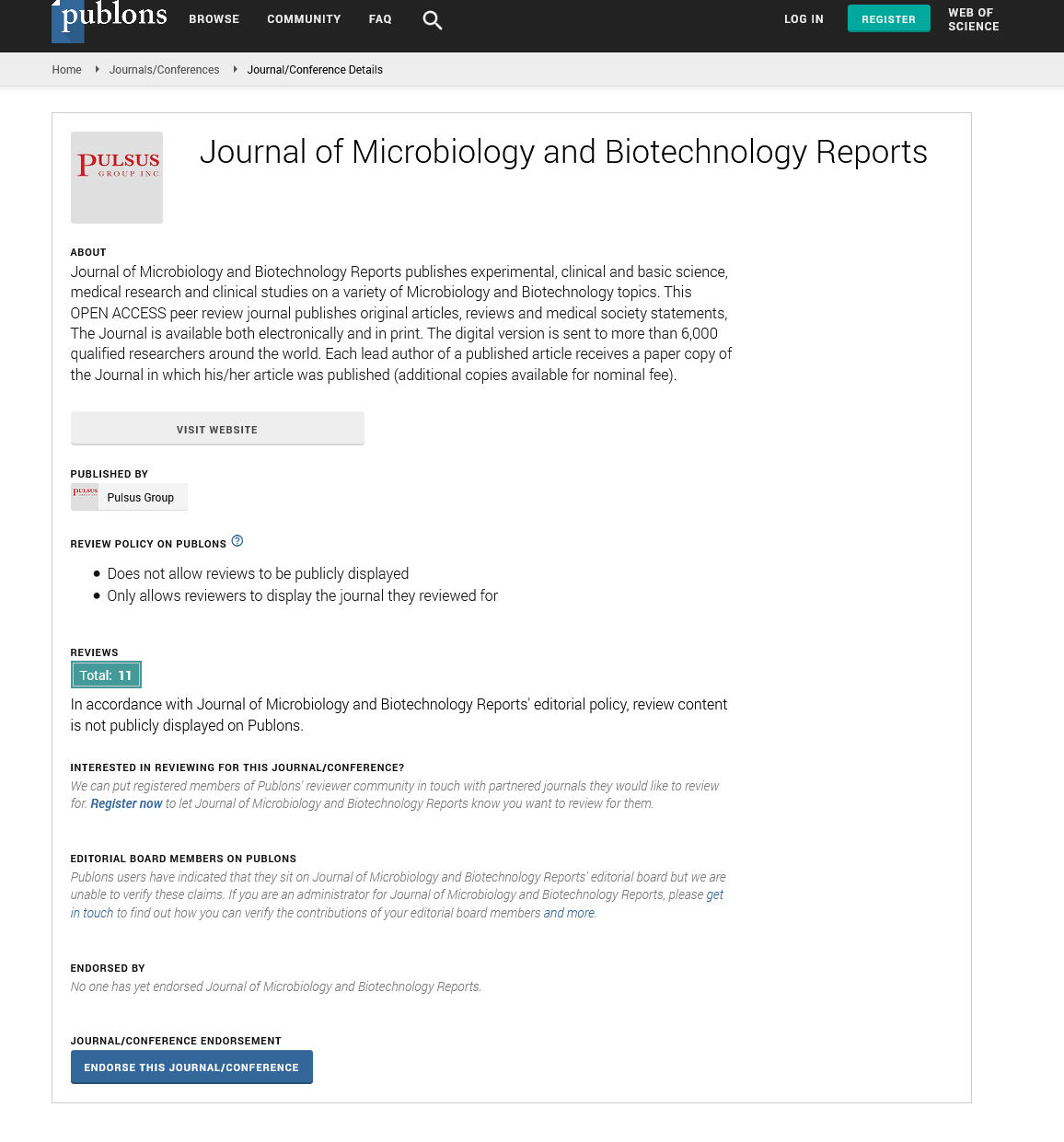A replication study found an association between genetic variations and adolescents' blood pressure and body mass index.
Received: 25-Aug-2022, Manuscript No. PULJMBR-22-5504; Editor assigned: 27-Aug-2022, Pre QC No. PULJMBR-22-5504 (PQ); Accepted Date: Sep 16, 2022; Reviewed: 11-Sep-2022 QC No. PULJMBR-22-5504 (Q); Revised: 13-Sep-2022, Manuscript No. PULJMBR-22-5504 (R); Published: 20-Sep-2022, DOI: 10.37532/puljmbr.2022.5(5).62
Citation: Smith J. A replication study found an association between genetic variations and adolescents' blood pressure and body mass index. J Mic Bio Rep. 2022;5(5):62.
This open-access article is distributed under the terms of the Creative Commons Attribution Non-Commercial License (CC BY-NC) (http://creativecommons.org/licenses/by-nc/4.0/), which permits reuse, distribution and reproduction of the article, provided that the original work is properly cited and the reuse is restricted to noncommercial purposes. For commercial reuse, contact reprints@pulsus.com
Abstract
Adiposity and Blood Pressure (BP) have a strong inverse relationship, which may be partially accounted for by genetic risk factors. In adolescents aged 12 years to 18 years, three nucleotide variations (rs16933812 (PAX5), rs7638110 (MRPS22), and rs9930333 (FTO)) were linked to systolic blood pressure (SBP) and body mass index (BMI). We made an effort to confirm these results using a sample of adolescents our age. At ages 13 years, 15 years, 17 years, and 24 years old, blood pressure and anthropometric markers were examined in a total of 713 adolescents. We investigated the relationships between these variations and BMI and SBP using linear mixed models. rs9930333 (FTO) was connected to body mass index in our data, but not to systolic blood pressure. Neither rs7638110 (MRPS22) nor rs16933812 (PAX5) were connected to the body’s systolic blood pressure, respectively. The disagreement between the research may be somewhat explained by variations in phenotypic definitions and genetic architecture among populations, although nucleotide variant selection in the initial study may have produced un-replicable false-positive results.
Key Words
Genetic. Replication
Introduction
High Blood Pressure (BP) and a high Body Mass Index (BMI) were the first and fourth risk factors for disability-adjusted life years, respectively, in 2015. Higher adiposity is a significant risk factor for raised blood pressure in both adults and adolescents, since there is a substantial correlation between BP and adiposity. According to the common variants/multiple illness theory, which was first put forward by Becker, the relationship between related variables, such as obesity and blood pressure, may be at least partially explained by common genetic risk factors. There may be shared genes controlling both features based on the estimated genetic connection between 24-hour ambulatory Systolic Blood Pressure (SBP) and BMI. More research is needed to find the pleiotropic genes involved.
It was found that three single nucleotide polymorphisms (SNPs) related to both BMI and SBP in a population-based sample of 598 adolescents aged 12 to 18 in Saguenay-Lac-St-Jean, Quebec, Canada. These SNPs were rs16933812 on PAX5, rs7638110 on MRPS22, and rs9930333 on FTO (SYS). These outcomes, though, have not yet been verified in a different sample. In recent meta-analyses for these variables, polymorphisms rs16933812 (PAX5) and rs7638110 (MRPS22), which were recently found variants in the SYS, were not connected to either BP or BMI. The FTO gene is well-known for being linked to obesity phenotypes, and the FTO variant rs9930333 has recently been linked to BMI in adults. Adults and children’s, but not with BP.
Evidence suggests that several BP-associated variations are expressed differently in children and adolescents than in adults, underlining the need for further research, particularly in this age group. A significant GenomeWide Association Study (GWAS) identified 31 genetic variations that affected adult blood pressure according to age, one of which had different effects in younger versus older people. Some claim that unique genetic effects occur during adolescence and their activation is likely related to pubertal changes. Some people have pointed out that not all genetic variations found in adult samples are connected to BP in kids, which suggests that age influences the impact of genetic variations on blood pressure. There are fewer and less often reproduced genetic association studies for BMI and BP in young people than in adults.
The major findings were replicated in the current investigation, which aimed to demonstrate that SNPs on three genes (rs16933812 on PAX5, rs7638110 on MRPS22, and rs9930333 on FTO) are related to both BMI and SBP. We utilized information from the Nicotine Dependence In Teens (NDIT) project, a 12-to 24-year longitudinal study of adolescents in Montreal, Quebec, Canada. In terms of age and geography, the NDIT sample was comparable to the SYS.





